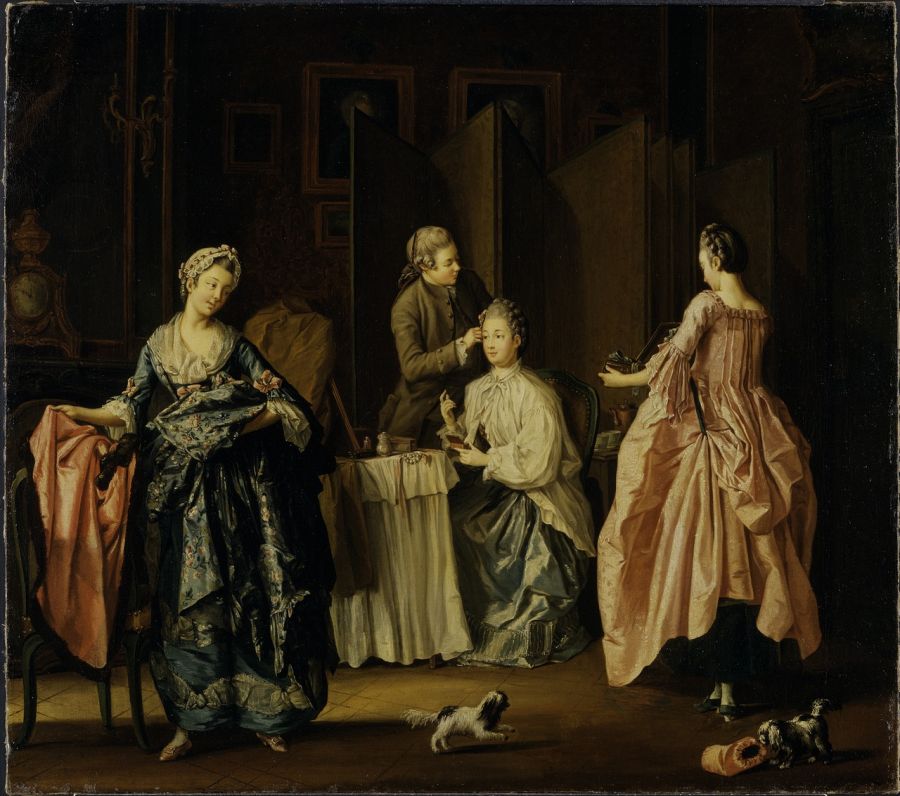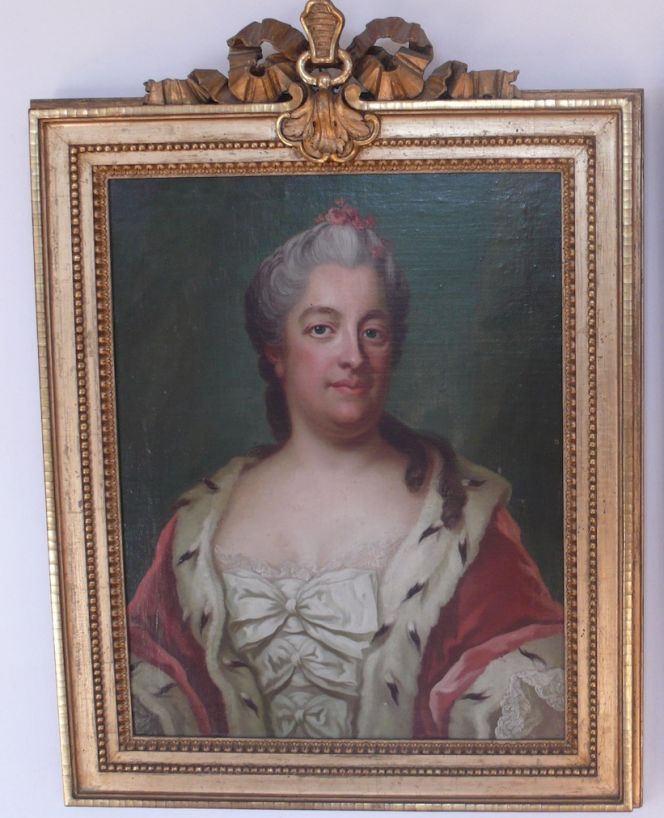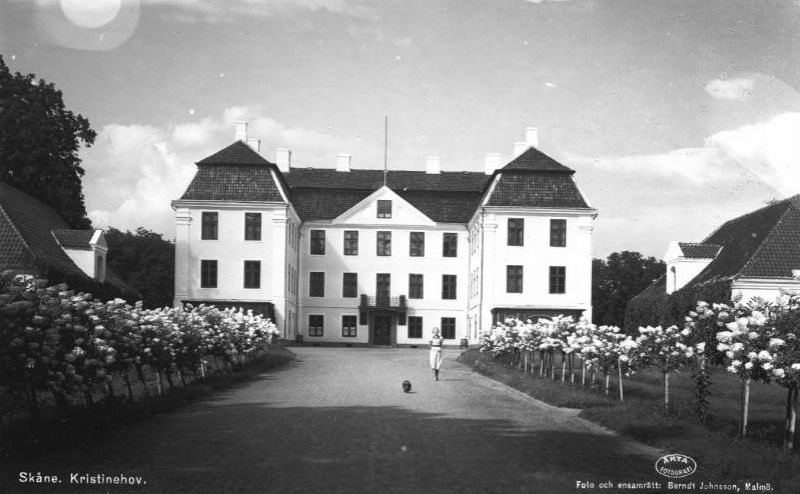ikfoundation.org
The IK Foundation
Promoting Natural & Cultural History
Since 1988


WARDROBES AND STORAGE OF CLOTHES
– at a Manor House in 1758
In this fourth study from one of my earlier projects – about Christinehof Manor House in southernmost Sweden – the 18th century Inventory reveals some details of how wardrobes were furnished. However, no clothing was listed in such documents as these were part of personal belongings, but the increasing consumption and desire for luxury in aristocratic families were visible in their everyday lives in other ways. Portraiture gives a representation of the body as well as textile materials used in the latest fashions. Other primary sources are hand-written correspondence, accounts, and recipes, which at times present facts of specific wishes or purchases connected to family members’ dress, which are kept in the Piper Family Archive.
 ‘The Morning Toilet. Boudoir Scene’ by Pehr Hilleström dating approximately from the 1760s, which gives a detailed view of nobility getting dressed in the morning. Maybe illustrating two sisters in their exquisite sack-back gowns, assisted by a male servant. The girl to the left in a white cap was possibly the lady’s maid, wearing one of the young ladies’ very fine discarded dresses. Notice the dark brown folding screen in the background, either used to get dressed behind or as a partition in the room. One such model with fewer panels was also mentioned in the inventory from Christinehof manor house in the Count’s Bedchamber, as ‘1 green folding screen with two panels’. (Courtesy of: National Museum, Sweden. NM 1149, Wikimedia Commons).
‘The Morning Toilet. Boudoir Scene’ by Pehr Hilleström dating approximately from the 1760s, which gives a detailed view of nobility getting dressed in the morning. Maybe illustrating two sisters in their exquisite sack-back gowns, assisted by a male servant. The girl to the left in a white cap was possibly the lady’s maid, wearing one of the young ladies’ very fine discarded dresses. Notice the dark brown folding screen in the background, either used to get dressed behind or as a partition in the room. One such model with fewer panels was also mentioned in the inventory from Christinehof manor house in the Count’s Bedchamber, as ‘1 green folding screen with two panels’. (Courtesy of: National Museum, Sweden. NM 1149, Wikimedia Commons).The count and countess who lived at the manor house in 1758 had one room-sized wardrobe each, adjoining their other suite of rooms on the first floor. Whilst children/grown-up children and visiting friends must have used cupboards, possible drawers in beds or other available spaces for storing clothes. Some listed furniture in the inventory may also have had such uses: ‘1 cupboard-table, 2 table-cupboards and 1 Cupboard chest of drawers.’
A transcription of items listed in the Countess’ Wardrobe on the first floor of the house and additions made in the year 1760 (underlined) gives detailed information about such a space in a large Swedish manor house.
‘In the room, there are no wallpapers
1 Bed with curtains of cotton
1 gate-legged bench, brownish painted
2 old Russian leather chairs
1 Brownish painted clothing cupboard on feet
1 larger ditto with feet
[1760] One moved down to the Tutor’s Chamber, the other placed in the Countess’ passage. Now in Moderü’s Chamber.
1 small gate-legged table to fell on two sides.
In the Count’s Writing Chamber, 2 new cupboards of pine wood for the Countess’ clothes, made in 1760.’
The Count’s Wardrobe was furnished in a simpler style:
‘The room has no wallpaper
1 small table and one square-shaped and gate-legged, brown painted, old.
Several trestles and boards to put clothes on.’
 This portrait probably depicted Ulrika Christina Mörner of Morlanda (1709–1778) ca 1748-50. In the same year (1758) as the inventory was written, she lived with her husband the count and tenant in tail Carl Fredrik Piper (1700-1770) at Christinehof manor house from July to October, according to a hand-written document of used firewood etc. Luxury silks, velvets, laces and ermine were part of her fashionable and representative dress – which could be kept in ‘the Countess’ Wardrobe’, a special room dedicated for her clothes, see above. (Courtesy of: Christinehof Manor House, Skåne, Sweden). Photo: The IK Foundation, London.
This portrait probably depicted Ulrika Christina Mörner of Morlanda (1709–1778) ca 1748-50. In the same year (1758) as the inventory was written, she lived with her husband the count and tenant in tail Carl Fredrik Piper (1700-1770) at Christinehof manor house from July to October, according to a hand-written document of used firewood etc. Luxury silks, velvets, laces and ermine were part of her fashionable and representative dress – which could be kept in ‘the Countess’ Wardrobe’, a special room dedicated for her clothes, see above. (Courtesy of: Christinehof Manor House, Skåne, Sweden). Photo: The IK Foundation, London.A number of similar pieces of furniture, probably used for clothing and other personal belongings, also revealed the place of origin for various items, the quality of wood and some of the pieces previously had been part of the family’s home in Stockholm or some other manor houses in their possession. For instance: ‘1 English chest of drawers with two mirror glasses, doors of walnut tree and brass fittings or 3 French inlaid walnut Commodes with gilded brass fittings or 1 Stockholm Commode with gilded fittings and green oilcloth cover.’ It was also listed that three of the commodes/chest of drawers had been moved from the main home, “the Palace” in Stockholm, which had been a Piper family home since 1692. Overall, several pieces of furniture had been transported circa 500 kilometres from the capital to Christinehof Manor House in southernmost Sweden by land or, more probably, by ship for heavier items. These cumbersome transports were either due to that some items were seen as “unfashionable” in the main home or that the chest of drawers, etc., were made by the most skilful carpenters in Stockholm, and then sold/transported to aristocratic families and others who had the means all over the country.
 This photo taken about 170 years after (1930s) the inventory was written, presenting a similar view of the manor house. The first floor being the main residence for the family and the inventory in 1758 gives quite a clear picture for the exact location of various rooms. For instance the ‘Countess’ Wardrobe’ was situated in the left wing at the window to the right, whilst the ‘Count’s Wardrobe’ was situated in the right corner of the right wing. (Courtesy of: Malmö Museum, Sweden. No. BJ001306, photo Berndt Johnsson).
This photo taken about 170 years after (1930s) the inventory was written, presenting a similar view of the manor house. The first floor being the main residence for the family and the inventory in 1758 gives quite a clear picture for the exact location of various rooms. For instance the ‘Countess’ Wardrobe’ was situated in the left wing at the window to the right, whilst the ‘Count’s Wardrobe’ was situated in the right corner of the right wing. (Courtesy of: Malmö Museum, Sweden. No. BJ001306, photo Berndt Johnsson).It may be concluded that clothes and other linen were stored lying flat in the mid-18th century in a variety of chests of drawers, large cupboard wardrobes and the occasional old chest. Clothes-hangers were first invented around 1870, giving people their first chance to hang up clothes in a wardrobe. So all descriptions of spaces for clothes in this inventory from 1758 were stored flat, but even if not mentioned, some garments may occasionally been kept on wall pegs. The wardrobe for the lady of the house (described above) included cupboards as protection from dust, dirt and light. However, a close study of the inventory list reveals that both rooms/wardrobes lacked curtains, so the Count’s arrangements seemed unsuitable. Reading… ‘Several trestles and boards to put clothes on’, leaving the expensive fabrics vulnerable to sunlight, etc. – if not, shutters were in constant use – as one of the windows faced south and the other southeast.
Notice: Quotes are translated from Swedish to English. A large number of primary and secondary sources were used for this essay. For a full Bibliography & information about the project, please see Viveka Hansen’s book, 2004 (pp. 14-15 & 38-62).
Sources:
- Hansen, Viveka, Inventariüm uppå meübler och allehanda hüüsgeråd sid Christinehofs Herregård upprättade åhr 1758, Piperska Handlingar No. 2, London & Whitby 2004.
- Hansen, Viveka, Katalog över Högestads & Christinehofs Fideikommiss, Historiska Arkiv, Piperska Handlingar No. 3, London & Christinehof 2016.
- Historical Archive of Högestad and Christinehof (Piper Family Archive, no D/Ia & F/III a 1).
Essays
The iTEXTILIS is a division of The IK Workshop Society – a global and unique forum for all those interested in Natural & Cultural History from a textile Perspective.
Open Access essays, licensed under Creative Commons and freely accessible, by Textile historian Viveka Hansen, aim to integrate her current research, printed monographs, and earlier projects dating back to the late 1980s. Some essays feature rare archive material originally published in other languages, now available in English for the first time, revealing aspects of history that were previously little known outside northern European countries. Her work also explores various topics, including the textile trade, material culture, cloth manufacturing, fashion, natural dyeing, and the intriguing world of early travelling naturalists – such as the "Linnaean network" – viewed through a global historical lens.
For regular updates and to fully utilise iTEXTILIS' features, we recommend subscribing to our newsletter, iMESSENGER.
been copied to your clipboard




– a truly European organisation since 1988
Legal issues | Forget me | and much more...
You are welcome to use the information and knowledge from
The IK Workshop Society, as long as you follow a few simple rules.
LEARN MORE & I AGREE







